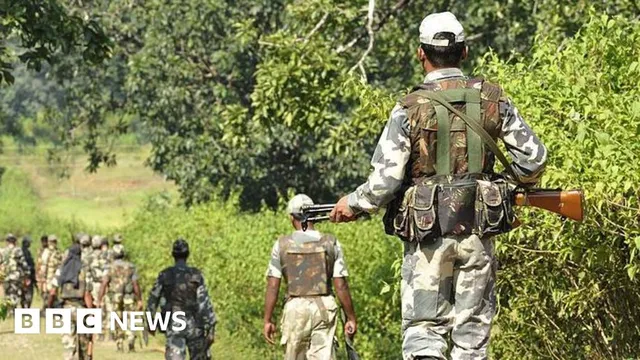
PM Modi praises forces for neutralizing 27 Maoists in historic anti-Naxal operation
2025-05-22 12:14- Security forces conducted an operation in Narayanpur, Chhattisgarh, resulting in the neutralization of 27 Maoists, including key leader Nambala Keshav Rao.
- This operation is seen as a landmark achievement in India's fight against left-wing extremism, breaking a 30-year precedent of General Secretary-ranked leaders remaining active.
- The government's commitment to eradicating Naxalism is reaffirmed, with a goal set for March 31, 2026, emphasizing ongoing security efforts.
Express your sentiment!
Insights
In a significant anti-Naxal operation carried out in Narayanpur district, Chhattisgarh, India's security forces neutralized 27 Maoists, including Nambala Keshav Rao, the General Secretary of CPI (Maoist), on May 20, 2025. This operation, which marked a monumental achievement in India's ongoing battle against left-wing extremism, was launched based on specific intelligence inputs and involved a coordinated offensive by joint teams of the District Reserve Guard (DRG) from multiple districts. The encounter took place deep in the forests of Abujhmad, where the security personnel faced heavy gunfire from the Maoists. Despite the challenging terrain, the forces responded effectively, leading to the deaths of numerous Maoist operatives, including their top leaders. Home Minister Amit Shah recognized this operation as a historic milestone, noting that it was unprecedented in combating Naxalism that a General Secretary-ranked Maoist leader had been neutralized in over three decades. In the aftermath, the security forces not only secured major victories in this encounter but also confiscated a sizable cache of weapons, which included AK-47s, SLRs, and INSAS rifles among other arms and ammunition. The death of Nambala Keshav Rao represented a critical blow to the operational capabilities of the CPI (Maoist) group, which has been responsible for various violent activities across India's forested regions. The Indian government has pledged to eradicate Naxalism by March 31, 2026, and this encounter is seen as a vital step towards achieving that goal. Following the operation, there have been reports of additional Maoists surrendering and being arrested in related operations. The security forces are continuing their efforts to locate any remaining insurgents in the area, reinforcing their commitment to restoring peace and security in regions affected by Maoist insurgency.
Contexts
Naxalism in India traces its roots back to the Naxalbari uprising of 1967 in West Bengal, which was inspired by Marxist-Leninist ideology. The movement initially began as a peasant revolt against feudal oppression, primarily focusing on the exploitation of landless farmers by landlord classes. Over the years, this grassroots movement evolved into a wider insurgency, characterized by armed struggle against the Indian state, with the primary objective of establishing a communist state through violence. The Naxalite ideology emphasizes the need for revolution to achieve social justice, particularly for marginalized communities, including Scheduled Castes, Scheduled Tribes, and other disadvantaged groups who have historically suffered under systemic inequalities and state repression. Throughout the 1970s and 1980s, various factions of the Naxalite movement emerged, leading to fragmentation. However, the core tenets remained consistent - the fight against imperialism, feudalism, and capitalism. In the 1990s, Naxalism gained prominence as several Maoist groups unified to form the Communist Party of India (Maoist), which heralded a renewed focus on armed struggle and insurgency. This period saw an increase in violent encounters and civil unrest, with the government responding through a mix of military and developmental strategies, attempting both to combat the insurgents and address the socioeconomic grievances that fueled the movement. As the 21st century progressed, Naxalism posed significant challenges for Indian governance. The spread of Naxalite influence was primarily concentrated in the so-called "Red Corridor," spanning several states including Chhattisgarh, Jharkhand, Bihar, and Odisha. According to various reports, millions of people were affected by Naxalite violence, with human rights abuses on both sides of the conflict becoming increasingly common. The government adopted a dual approach, involving forceful counterinsurgency operations while also attempting to implement welfare schemes aimed at improving the living conditions of the rural poor, which directly addressed some of the roots of the discontent that fueled Naxalism. In recent years, the Indian government has claimed successes in reducing Naxalite violence through consistent counterinsurgency efforts and localized development programs. However, the persistence of deep-seated issues such as poverty, lack of education, and social injustice in tribal areas continues to challenge governmental attempts to eradicate Naxalism completely. As of 2025, while the movement has seen some decline, it is evident that holistic solutions, involving dialogue, socio-economic reforms, and addressing the grievances of the affected populations, are necessary to foster lasting peace and stability in the affected regions.